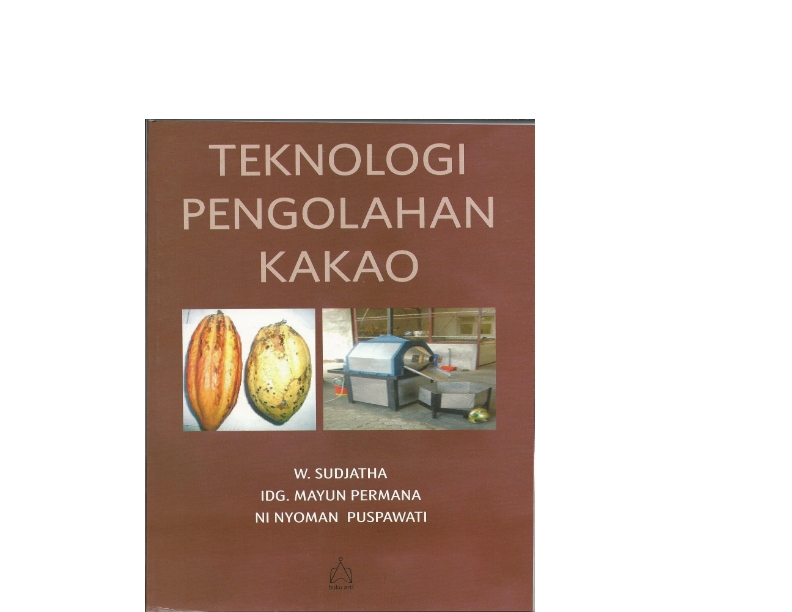
Cocoa Processing Tecnology
W. Sudjatha; I D.G. Mayun Permana; N. Puspawati
ISBN : 978-979-1145-95-4 Published : 2015
Abstrak
COCOA PROCESSING TECHNOLOGY
By
W. Sudjatha; I D.G. Mayun Permana and Ni Nyoman Puspawati
Cocoa (Theobroma cacao L) in the community called cocoa is a type of tropical plant that is suitable for growing in areas at an altitude of 500 -600 meters above sea level. Cacao plants produce after 4-5 years and peak production after 12 years with fruit throughout the year and can be harvested twice a year. Part of the fruit used is the seeds, especially the cotyledons. Cocoa beans contain very high fat (more than 50%) which is used for cosmetics, pharmaceuticals and especially food. The nature of cocoa butter is very specific at room temperature in the form of solid and at body temperature (37oC) it becomes liquid. Another result is cocoa powder which is widely used for making food and beverages.
Indonesian cocoa based on its quality is divided into two types, namely Cocoa Mulia (Fine cacao) and Cocoa Lindak (Bulk cacao). The characteristics of noble cocoa: skin when young is red, rough surface, big round seeds are white in color and taste good. While cocoa skin color when young green, smooth surface, small seeds flat and purple, it feels chunky. The types of cocoa that are developed by Indonesian farmers are mostly species because they do not require fertile soil, are resistant to disease and have higher production.
Processing of fruit until it is ready for consumption there are two stages, namely processing from fruit to dried beans and the second stage processing dried beans into foodstuffs such as cocoa butter, cocoa powder or other food products that are ready for consumption. The quality of Indonesian cocoa beans is based on the Indonesian National Standards (SNI) 01-2323-2008
Cocoa Processing Process
In principle, the important stages of cocoa processing are the removal of pulp and drying because these two stages determine the quality of the dried beans. Pulp removal can be done physically by squeezing the seeds, but in the world of commerce requires cocoa beans must be fermented because without fermentation produces low-quality seeds. Cacao fermentation is not difficult because the process does not require special yeast but occurs naturally by leaving the beans in a container. The usual steps for processing cocoa are as follows:Picking cocoa is done on ripe fruit by cutting the fruit stalk using a knife or other cutting tool to avoid injury to tree trunks. The easiest and most common way to determine fruit maturity is to see the fruit change color to yellow
